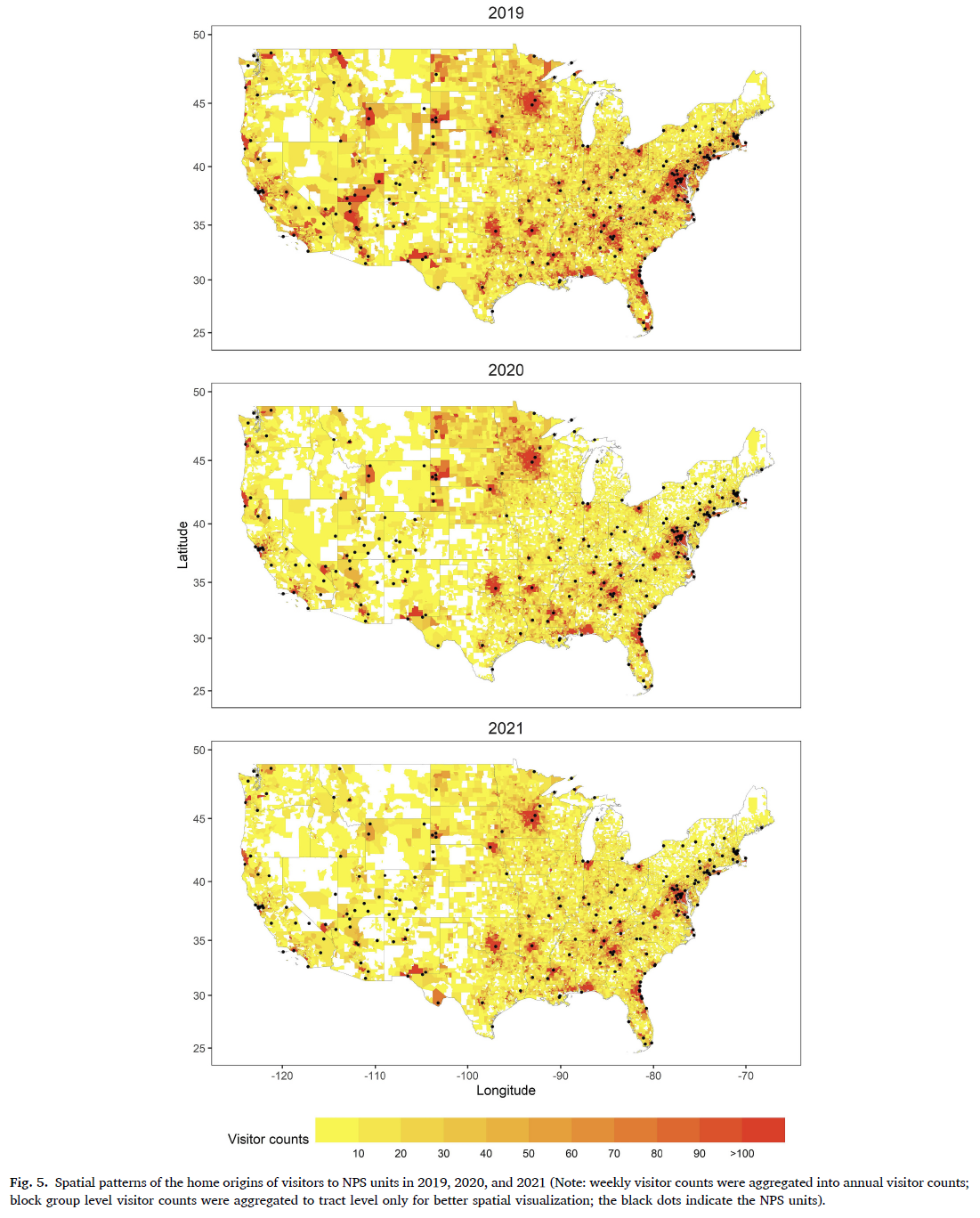Spatial, temporal, and social dynamics in visitation to U.S. national parks: A big data approach
Published on Tourism Management Perspectives.
Authors: JJunyu Lu, Xiao Huang, John A. Kupfer, Xiao Xiao, Zhenlong Li, Hanxue Wei, Sicheng Wang, Liao Zhu
The degree to which many benefits of national parks are realized hinges on public access. Traditional methods in estimating park visitation can be time-consuming, costly, and labor-intensive. Fortunately, the growing availability of ‘big data’ offers new opportunities for rapid and large-scale estimation. This study investigated the spatiotemporal dynamics in visitation to all National Park Service (NPS) units in the contiguous U.S. and explored associated sociodemographic factors using fine-grained SafeGraph mobile device location data. We found that people tend to travel less frequently and in a shorter distance to visit NPS units in both 2020 and 2021 vs. 2019. During the pandemic, people preferred visiting national parks and nature-based NPS units over culture-oriented ones relative to pre-pandemic levels. Most importantly, this study highlights a long-standing social inequity – the groups of minorities (i.e., Blacks, Asians, and Hispanics) and lower-income were less likely to visit NPS units than Whites and higher-income, respectively.
